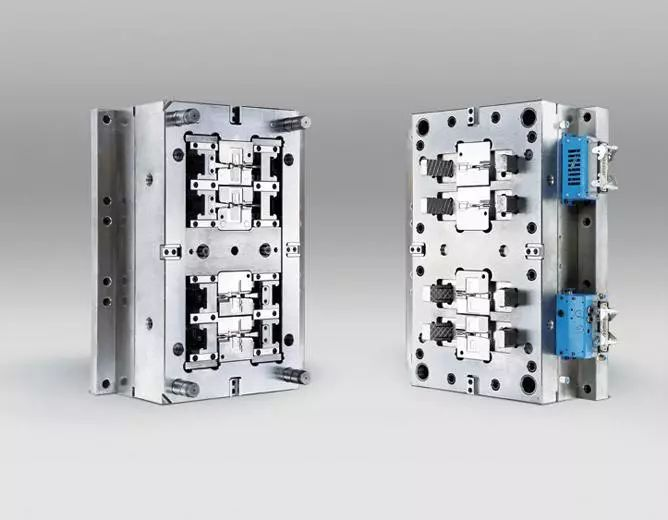The parting surface of the mold provided by the mold manufacturer is required to have no traces of manual polishing, and many domestic factories cannot meet this requirement. In fact, generally mid-range molds (small and medium-sized) should meet this requirement. This requirement is one of the comprehensive indicators to examine the design level, equipment level, process level, management level, quality assurance system and employee quality of the mold manufacturer.
First of all, finish machining the mold parts after 3-4 hours of working in the machining center, and the effect will be the best. Secondly, it is necessary to solve the problem of deformation of mold parts due to internal stress during all processing, so as to minimize the deformation during processing. During the cutting of mold parts, due to the processing tools, electrodes, cutting wires, cold and heat changes, and the force exerted by the fastening tools on the material, the internal stress generated by the processed material is continuously accumulated; at the same time, the internal stress is continuously accumulated. The stress is constantly accumulating in an attempt to release it. When the accumulated internal stress reaches a considerable degree, the rigidity of the material is overcome, the shape of the processed part is changed, and the deformation occurs. It is inevitable for the processed material to accumulate internal stress during the cutting process, so it is inevitable that the internal stress will cause the deformation of the mold parts. We know that the most internal stress accumulates in the mold parts is the deep hole drilling, grinding, roughing and electrical processing stages, as well as the welding processing stage. Overcome the deformation caused by internal forces in the mold parts. There are no more than two ways: elimination of internal stress and mechanical reprocessing or a combination of the two. The elimination of internal stress is generally the method of heat treatment, which is what we usually call “correspondence treatment”. After the general steel parts enter the furnace, they will gradually heat up to about 590°C within 6-12 hours, keep them warm for 2-6 hours (depending on the size and thickness of the workpiece, but also according to the local seasonal temperature at the time), and then cool down with the furnace. This process generally takes 24-48 hours. Generally, after the aluminum parts enter the furnace, they will gradually heat up to about 290°C within 6 hours, keep them warm for 2-4 hours (depending on the size and thickness of the workpiece, but also according to the local seasonal temperature at the time), and then cool down with the furnace. This process generally takes 24 hours. During mechanical processing, especially rough processing, the force of the tightening tool must be even. Generally, multi-pass, diagonal tightening, tight-loose-tight method is adopted. The processing method we are generally used to is to identify a reference surface, which remains unchanged from beginning to end during the processing process, and uses it as a reference to process other parts. In fact, due to the deformation caused by the accumulation of internal stress during processing, this reference plane is also deforming. The deformation of the reference plane will cause many changes in the rest of the shape. Through trimming during assembly, many changes have been produced, and these accumulations will affect the quality and life of the mold. In order to make the performance of the manufactured mold meet the design requirements, we should solve the common problem in the mold manufacturing process to overcome the deformation caused by the internal stress during the processing. The next article will continue in detail.
Post time: Oct-22-2021


